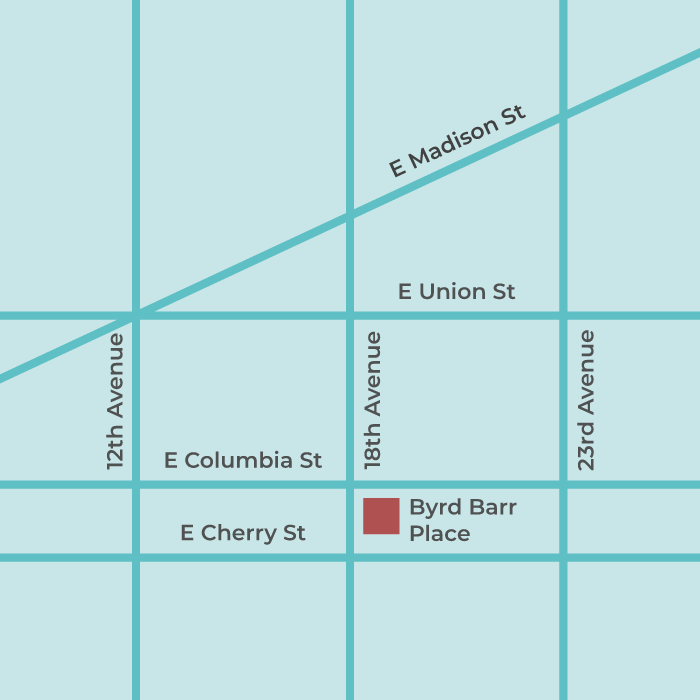By Obioha Okereke, College Money Habits
 How you budget is just as important as where you budget. One of the easiest and most common ways of setting up a budget is with a spreadsheet or a budgeting template.
How you budget is just as important as where you budget. One of the easiest and most common ways of setting up a budget is with a spreadsheet or a budgeting template.
There are lots of mobile applications and online resources available that you can find through a quick internet search. We’ll share a few throughout this article to help you get started.
Here are six easy tips for creating a personal budget:
1. Select a budgeting template or app
Using a template spreadsheet is a good way to start tracking all of your spending. Staying up-to-date on where you spend money can help make setting realistic goals possible. It can also help quickly identify areas where you might be overspending.
Free budgeting apps also make it easy to budget. Budgeting apps can automatically total your spending from your debit and credit cards, as well as track the balances of your savings, investments, and loans.
Nerdwallet recommends the following apps:
- Mint: Great all-around budgeting app
- Honeydue: Best for budgeting with a significant other
- You Need a Budget: Best for hands-on, zero-based budgeting
2. Compile your financial information
To compile your financial information, you will want to gather things like:
- Bank account statements
- Student loan statements
- Investment account balances
- Auto loan statements
- Mortgage or rental statements
- Utility bills
- Paystubs
- Information regarding expenses (e.g., grocery receipts, transportation related receipts)
The purpose of gathering this information is to help you get an accurate reading of your current financial state. The more information you have, the better. Having a budget that takes into account all of your financial information will help you create an accurate budget.
3. Calculate your monthly income
If you work part-time or full-time, you can calculate your net income (income minus taxes) by totaling your monthly paychecks. If you have additional income through benefits, freelancing or other additional money, make sure to include that in your income as well.
If your income is inconsistent, or fluctuates from month to month, you should either take your average income, or base your monthly income on your lowest-earning month over the past year.
Using one of the above methods will help calculate an accurate income without overestimating, which will allow you to form a more reliable budget.
Note: If you earn freelance income or other income where taxes are not automatically deducted, you may want to set aside money for tax season. The amount of taxes you pay will be based on your income tax bracket which is based on your total annual income. To learn more, check out Federal Income Tax Brackets & Tax Rates by Nerdwallet.
4. List and calculate your monthly expenses
Now that you have calculated your total monthly income, it is time to figure out your monthly expenses.
Your list of expenses should include the following:
- Fixed: Expenses that don’t change from month to month (e.g., rent, loan payments).
- Variable: Expenses that vary based on usage and fluctuate over time (e.g., groceries, gas, utilities).
- Flexible: Non-essential expenses that can easily be reduced or eliminated (e.g., Netflix subscription, gym membership).
Here is a quick list of common expenses to help you start:
- Rent or mortgage
- Groceries
- Utilities
- Transportation
- Student loan payments
- Entertainment
- Dining out
- Insurance
Next, calculate how much you spend on each monthly expense:
- For variable expenses, such as groceries, that fluctuate from month to month, you will want to look at your average spending for the past three months. If this is difficult, look at your spending in the previous month.
- Make sure that you are taking note of any existing or upcoming loan payments as well.
Once you’ve made a list of all monthly expenses and how much you spend on each one, add all of the expenses together to find your total monthly expenses.
5. Review expenses and decide on spending values
Once you’ve reviewed your expenses and income, you will be able to take note of any trends with your spending and begin to assign spending values in specific categories. Each category of spending should have an amount designated to it. A good budgeting model that you can follow is the 50/30/20 budget, in which 50% of your budget is for needs, 30% is for wants, and 20% is for saving, investing, and/or paying off debt. To learn more, read “The 50-30-20 Budget.”
6. Adjust your expenses
If you find that your expenses are greater than your income, you will need to make changes to how you’re spending money. Similarly, if you have debt payments or fluctuating income, you will want to account for this when creating your budget.
If your current spending is larger than your income, look for areas where you can easily make changes, like eating out less, canceling a subscription you hardly use, or spending less on leisure and entertainment.
Once you’ve identified areas of where you can spend less, set a budget to limit your spending in those areas and redirect that money toward saving, paying off debt and/or investing.
If you are looking to cut back your spending in one area, do not try to do it all at once. Rather than making drastic, sudden changes, set small goals like “I want to spend $30 less on dining out this month.” It is important to set realistic goals as you scale back your spending.
If you have any questions regarding these personal finance resources and/or general questions about managing your personal finances, contact Obi Okereke from College Money Habits at learn@collegemoneyhabits.com.
Related Articles:
Understanding Discretionary Income
Budgeting starts with knowing your discretionary income. Learn what goes into calculating it and apps to help you track spending against your budget.
The 50-30-20 Budget
This popular budgeting strategy helps you manage your money with 50% for needs, 30% for wants, and 20% for saving, investing and/or paying off debt.
5 Budgeting Mistakes to Avoid
Knowing these five common budget mistakes can help you build your savings and create better money habits.
3 Money Lessons that helped me save $100,000
College Money Habits Founder Obioha Okereke describes three important money habits that gave him the confidence and skills to save $100,000.

